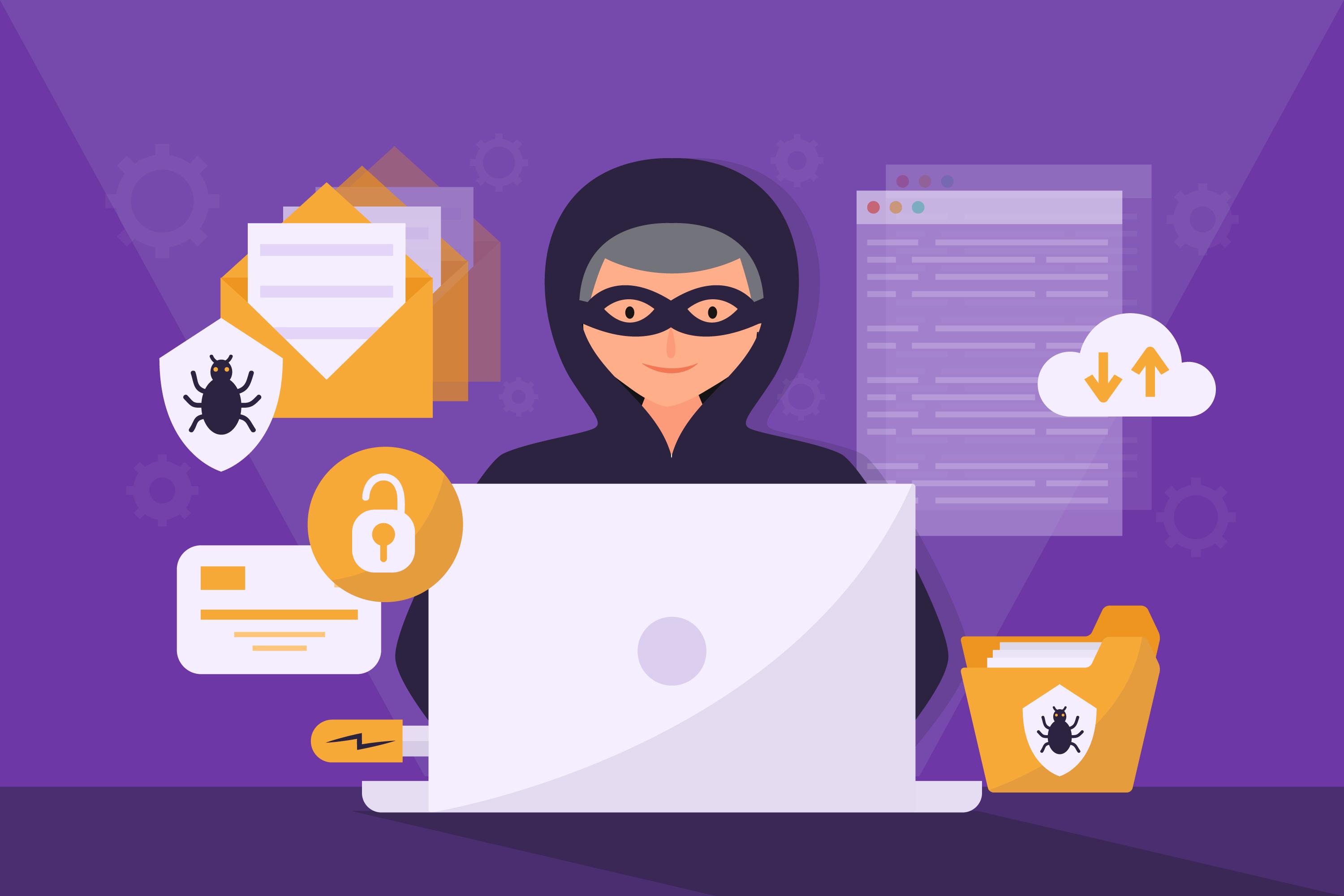

Hide My Email: Simple Ways to Protect Your Real Email Address
Introduction
Ever received a spam email that made you wish you could just disappear from the digital world for a moment? It’s frustrating, right? That inbox full of junk, unsolicited ads, and companies selling your info to the highest bidder. You’ve probably thought about how nice it would be to just hide your real email address from the world.
Here’s the good news: You can. With a few simple steps, you can protect your privacy and stop your inbox from overflowing with nonsense. This article is all about how you can hide your email and keep your personal info safe.
The goal here isn’t just to give you a quick fix but to help you understand how email privacy works and how you can take control. By the end, you'll have a solid idea of how to keep your email address private—and your inbox a lot less stressful. Ready? Let's dive in!
Understanding Email Privacy Risks
Email privacy might not be something we think about every day, but it’s more important than we realize. Whenever we share our email address online—whether it's to sign up for a newsletter, create an account, or even leave a comment—we open ourselves up to a range of risks. From spammers collecting your email to hackers attempting to steal personal data, it’s a minefield out there.
One of the biggest dangers is having your email address exposed in a data breach. It may seem unsettling, but it happens more often than you'd think. A company you trust might get hacked, and suddenly, your email is in the hands of criminals. This can lead to phishing attempts, identity theft, or even just a flood of spam.
Also, many websites and services sell or share your email with third parties, without you even knowing it. Over time, this creates a web of exposure, leaving you more vulnerable than you'd like.
Being aware of these risks is key to protecting yourself. Once you know how easily your email can be accessed or misused, you’ll see why taking steps to hide it is so important.
What Does "Hide My Email" Mean?
So, what does it actually mean to “hide your email”? At its core, it’s about protecting your personal email address by keeping it out of sight from prying eyes—whether that’s marketers, hackers, or anyone else who might misuse it.
When you "hide" your email, you’re using alternative methods to share your contact information without giving away your real address. It’s similar to using a decoy in a game of hide-and-seek. Rather than giving out your main email whenever you register for a service, you can rely on tools that create a temporary or hidden email address.
These masked addresses forward any emails to your real inbox, but they don’t reveal your actual email. That way, even if a website sells your email address to advertisers, they won’t have access to your real one. It’s like putting a shield around your privacy, and the best part? You can get rid of the decoy email anytime you want, keeping your real email safe and clean.
In simple terms, hiding your email helps you control who gets access to your information and shields you from the risks of the online world.
Beginner's Guide to Hiding Your Email
If you’re new to hiding your email, don’t worry—it’s easier than you might think. There are a few simple tools and tricks that can help you keep your real email address private without much effort.
One of the easiest ways to get started is by using a “temporary” email address. There are services like TempMail2 or Guerrilla Mail that let you create an email that’s disposable and doesn’t require any personal information to sign up. You can use these for things like signing up for websites, downloading free resources, or testing services. Once you’re done, you just delete the temporary address, and that’s it—no more spam.
A straightforward approach is to create email aliases. Services like Gmail and Outlook let you do this by inserting a “+” into your address. For example, if your email is john.doe@gmail.com, you could use john.doe+shopping@gmail.com when signing up on shopping websites. Emails sent to the alias will still go to your inbox, but if you start receiving too much junk, you can just filter or block that specific alias.
These beginner-friendly methods are perfect for protecting your email address when you're signing up for services or websites that you don’t fully trust. It’s quick, effective, and doesn’t require much setup.
Intermediate Methods for Enhanced Privacy
Now that you’ve got the basics down, let’s take things up a notch. If you’re looking for a bit more control and better protection, there are a few intermediate methods you can use to keep your email address even safer.
One popular option is using email forwarding services like ProtonMail or SimpleLogin. These services allow you to create a masked email address that forwards messages to your real inbox. Unlike temporary emails, these services are more secure and can be used long-term. You can also create multiple aliases under one account, giving you the flexibility to assign different addresses for different purposes. You could, for instance, keep one alias for online shopping, another for professional use, and a different one for newsletters. If any alias begins receiving spam, you can simply deactivate it while keeping your primary email untouched.
Another method is to use a separate email address for sign-ups and online activities. This might sound like an extra step, but having a dedicated "public" email that you use only for online forms and services can keep your personal email free from unwanted exposure. You can then set up filters to direct important emails from trusted sources to your main inbox while leaving the clutter behind.
These intermediate methods give you more control and a higher level of privacy. You won’t need to worry about spam piling up in your inbox, and if something goes wrong, you can easily track where the problem came from. Plus, the extra layer of protection makes it harder for anyone to trace your real email address.
Advanced Techniques for Privacy Enthusiasts
For those who really want to take their email privacy to the next level, there are advanced techniques that provide robust protection, although they might require a bit more effort and tech know-how.
One powerful method is using a dedicated email privacy service like Hushmail or Tutanota. These services provide end-to-end encryption, meaning your emails are securely encrypted from the moment you send them until they’re received. Even the service providers themselves can’t read your emails. This level of security is perfect for anyone concerned about serious privacy risks, like activists or professionals working in sensitive areas.
Another advanced option is utilizing a virtual private network (VPN) while accessing your email. While a VPN doesn’t directly hide your email, it helps mask your IP address, making it more difficult for anyone to trace your email activity back to you. This extra layer of anonymity makes it harder for advertisers, hackers, or anyone else trying to track your online movements.
Finally, consider using a burner email app or service that automatically deletes or expires after a set time. This is ideal for one-time use cases—like registering for events, downloading free offers, or interacting with sites you don’t plan to visit again. These services ensure that your email address vanishes into thin air once the task is complete, leaving no trace behind.
These advanced techniques offer a significant boost to your email privacy, but they require a bit more maintenance and knowledge to set up. However, if privacy is a major concern for you, these steps will give you the ultimate control over who sees your information.
Best Practices for Maintaining Email Privacy
Even with all the tools and techniques in place, maintaining email privacy isn’t a one-time task—it’s an ongoing effort. Here are some best practices that will help you keep your email address safe in the long run.
First, always be mindful of where and when you share your email. If a website or service doesn’t need your email to function, consider skipping the registration altogether or using an alias. It’s easy to get caught up in signing up for everything, but keeping your email to yourself when possible will reduce your exposure.
Second, be cautious about email subscriptions. While some newsletters and offers might seem like a good deal, they can often end up cluttering your inbox. Unsubscribe from anything you no longer need or want. Regularly cleaning out your inbox helps minimize the chance of spam and unwanted promotions finding their way in.
Third, make sure you have strong passwords and enable two-factor authentication (2FA) for any accounts linked to your email. This adds an extra layer of protection, especially if someone tries to compromise your email through hacking or phishing.
Lastly, periodically review the security of your email account and update your recovery options. If you haven’t already, turn on any privacy features your email provider offers. And remember, if a service you signed up for no longer feels trustworthy, don’t hesitate to delete or disable any aliases or accounts associated with it.
By following these practices, you’ll stay ahead of potential risks and ensure your email privacy remains intact. It might require some maintenance, but it’s worth it for the peace of mind.
Conclusion
In today’s digital world, keeping your email private is more important than ever. Whether you're simply looking to avoid spam or protect yourself from serious security threats, there are plenty of ways to keep your real email address safe. From basic techniques like using temporary emails to advanced methods such as encrypted services and VPNs, you can find a solution that works for you.
The key is to be proactive. Stay aware of the risks, choose the right tools for your needs, and consistently follow best practices to maintain your privacy. The more control you have over your email address, the less vulnerable you’ll be to unwanted attention or cyber threats.
Remember, hiding your email isn’t just about keeping your inbox clean—it’s about taking charge of your online presence and protecting what matters most. By implementing even a few of these strategies, you’ll be well on your way to keeping your email address private and your personal information secure.
Related Articles :-
- Marketing Design Essentials: How to Create Visuals That Convert
- How to Detect and Remove Scam Emails from Your Inbox
- Top Market Intelligence Tools to Stay Ahead of Your Competitors
- Temporary Mailboxes: Secure, Disposable Email Solution
- Step-by-Step Guide to Creating an Email Without a Phone Number




